Regional Cuisine of Japan: The Kinki region's Local Specialties
In Japan, there is a special kind of food called “Kyōdo Ryōri” (郷土料理), which means regional or local cuisine. Various regions have developed their own unique food cultures and these traditional dishes have been passed down through generations in different parts of the country. Each region has its own unique ingredients, cooking methods, and flavors, often shaped by the local climate, geography, and culture.
Kyōdo Ryōri isn’t just about eating—it’s a way to experience the local history, traditions, and lifestyle of each area in Japan. If you're traveling in Japan, trying these regional dishes is one of the best ways to connect with the culture and the people.
In this article, we will introduce the major Regional Dishes from Kinki region.
Ise Udon
Ise Udon features extra-thick noodles simmered until soft, then topped with a dark, slightly sweet sauce made from tamari soy sauce blended with dashi from bonito flakes and dried sardines. It is typically served with minimal toppings, often just chopped green onions.
Tekone Sushi
This sushi dish consists of red-fleshed fish such as bonito or tuna marinated in a soy sauce–based sauce, then placed atop vinegared rice. It is often garnished with shiso leaves, ginger, or nori to taste.
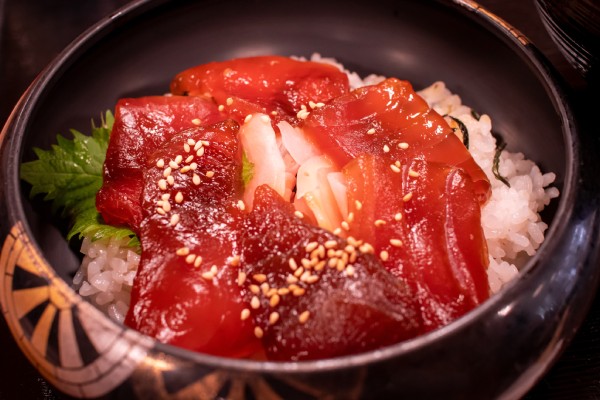
Funa-zushi
A traditional fermented sushi made with female nigoro-buna (a type of crucian carp) filled with rice and salt after removing all but the roe. The fish is first salted for several months to a year, then layered with rice in barrels and sealed for additional fermentation. Typically, only the fish is consumed.
Duck Hot Pot
In winter, wild mallards migrate from Siberia to Lake Biwa. These ducks develop firm meat and rich fat to withstand the cold, making them ideal for a hot pot dish simmered with tofu, leeks, and Chinese cabbage. The combination of rich duck fat and hearty vegetables is a local favorite.
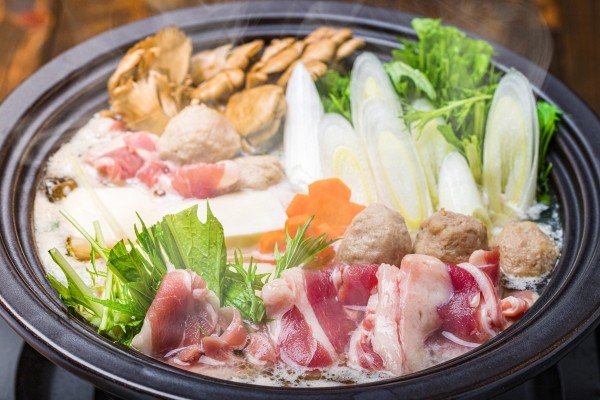
Kyoto Pickles
Kyoto-style pickles are lightly salted to preserve the natural umami of the vegetables. With an emphasis on fragrance and visual appeal, they are known for their elegant, delicate taste. Famous varieties include senmaizuke, suguki, shibazuke, mibuna-zuke, and kanazuke.
Grilled Kamo Eggplant with Miso
Kamo eggplant is a prized variety known for its fine texture and visual appeal. It is halved, slowly grilled to cook thoroughly, then topped with a sweet miso glaze and served with its skin. This simple yet luxurious dish is a Kyoto specialty.

Hakozushi
Hakozushi, or box sushi, is made by layering vinegared rice and toppings such as shrimp or fish fillets in a wooden mold, then pressing it into a neat rectangular shape. It is also known as oshizushi or Osaka-style sushi.
White Miso Zoni
A traditional New Year’s soup in Osaka and Kyoto, made with white miso and round rice cakes (mochi). Vegetables like daikon, carrot, and taro are added—often sliced into round shapes to symbolize harmony and good fortune.
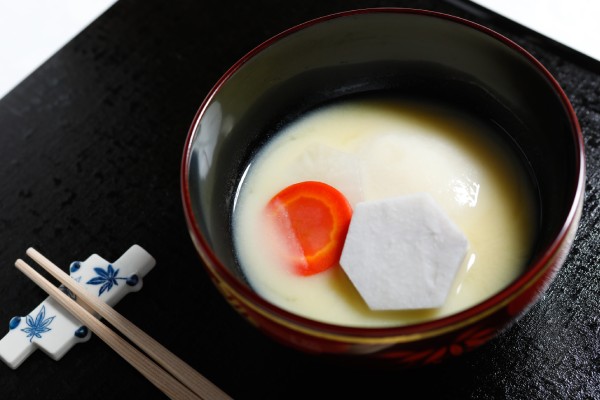
Botan Nabe
This wild boar hot pot is named for the dish’s presentation—thinly sliced boar meat arranged to resemble a peony (botan) flower. The meat is simmered with vegetables such as napa cabbage, carrots, burdock root, and mushrooms, becoming tender and rich in flavor.
Kugini of Young Sand Lance
A seasonal specialty along the Seto Inland Sea, especially from late February. Juvenile sand lances (ikanago) are simmered in soy sauce, mirin, sugar, and ginger until glossy and caramelized. The dish is called kugini because the finished fish resemble nails (kugi).
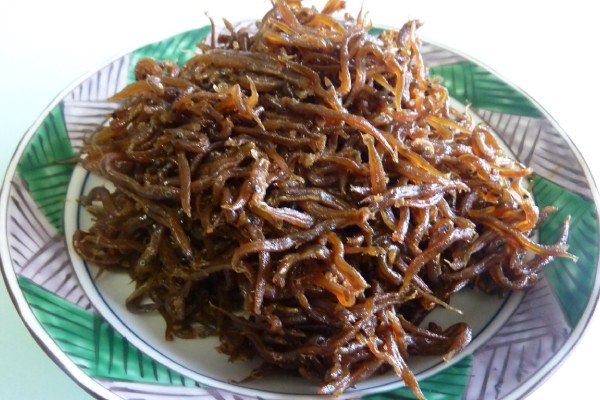
Kaki no Ha Sushi
This pressed sushi is made by placing a slice of mackerel atop bite-sized vinegared rice, then wrapping it in a persimmon leaf, which has natural antibacterial properties. In the mountain villages of Yoshino, where fish and rice were once rare, this was considered a festive treat for summer gatherings.
Miwa Somen
Dating back over 1,200 years, Miwa Somen from Sakurai City is known for its delicate thinness and firm texture. Made using high-quality wheat, pure spring water, waterwheel-powered milling, and refined noodle-making techniques, it is one of Japan’s finest somen varieties.
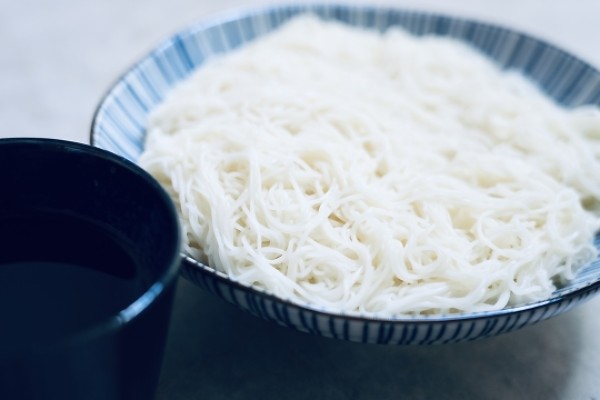
Deep-Fried Whale Tatsuta Style
Whale meat is cut into bite-sized pieces and marinated in a mixture of soy sauce and ginger juice to enhance its flavor. After removing excess moisture, the pieces are coated with potato starch and deep-fried until the outside is crispy and the inside remains tender. Taiji Town in Wakayama is known as the birthplace of organized whaling in Japan.
Mehari Sushi
Mehari sushi is a type of rice ball wrapped in pickled takana (mustard greens). The salt-pickled takana leaves are rinsed, squeezed thoroughly, and soaked in a seasoning blend of soy sauce and mirin to enhance the flavor. Cooked rice is then wrapped in the seasoned leaves. The name comes from the expression “me wo miharu hodo oishii” – meaning “so delicious it makes your eyes open wide.”
update